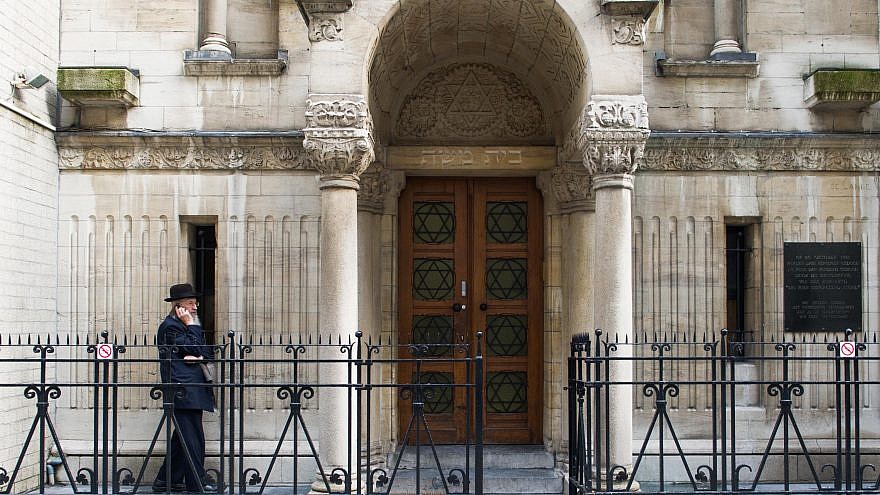The continent of Europe ceased to be the center of Jewish life more than a century ago, when it yielded that status to the increasingly affluent, influential Jewish community in the United States, joined, a bit later on, by the State of Israel. That transition has generated a question that can justifiably be described as “perennial,” inasmuch as it gets asked with predictable regularity and produces more or less the same answers.
In its most neutral framing, that question reads as follows: Is there a future for Jewish life in Europe, or will the Jewish communities of that continent slowly phase out through the various pressures of anti-Semitism; marriage or life commitments involving non-Jewish partners; emigration to Israel, America or other countries; and similar “push” factors?
Both sides of this debate are united in taking a dim, dark view of Europe. By this yardstick, whether the Jews stay or leave depends not so much on whether things improve, but to what degree they get worse.
Over the last 13 years, fortunately, a good deal of relevant data has been assembled under the auspices of the New York-based American Jewish Joint Distribution Committee (JDC). More than a century after the “Joint,” as it was known, made its initial forays into Europe to assist beleaguered Jewish communities in the last years of World War I, it maintains a strong profile across the Atlantic. Every three years since 2008, its European research arm, the International Centre for Community Development (ICCD), has published a comprehensive survey involving hundreds of Jewish community professionals across the continent. There is arguably no better source for understanding the priorities of those communities, and the differences and overlaps between them, than the ICCD’s survey.
The main takeaway from this year’s study would seem to bolster the argument that there isn’t a long-term future for Jews in Europe. For the first time since the survey’s inception, anti-Semitism rose to the first position in the ranking of the most serious threats to the future of Jewish life (with 71 percent of respondents giving a score of 4 or 5 on a 1 to 5 scale).
Combating anti-Semitism was named as the main community priority for future years (scoring 8.8 on a 1 to 10 scale). When asked if they expected changes over the next five to 10 years, respondents were pessimistic, with 68 percent expecting anti-Semitism to increase “significantly” (28 percent) or “somewhat” (40 percent).
A major part of the reasoning here relates to the events and episodes of the last 18 months. This past May, as Hamas terrorists once again dragged Israel into a renewed conflict in Gaza, anti-Semitic attacks in Europe skyrocketed, as they tend to do during times of tension in the region. Among the more unsettling spectacles were dozens of demonstrators, many of them young Muslims, chanting the slogan “s**t Jews!” in the German city of Gelsenkirchen and a convoy of Islamists that drove through Jewish neighborhoods in North London broadcasting a threat to “rape your daughters” through a megaphone. What is more, all of that came in top of a year of angry demonstrations against COVID-19 public-health measures in Germany, France, the Netherlands and many other countries, in which explicitly anti-Semitic messages blaming Jews for the virus as well as the exploitation of Holocaust imagery became increasingly visible.
Not surprisingly, perhaps, the survey reported that European Jewish leaders “seemed almost equally divided between optimists and pessimists, as 47 percent of the leaders ‘strongly agreed’ or ‘rather agreed’ with the statement ‘the future of European Jewry is vibrant and positive,’ and 52 percent with ‘I am optimistic about the future of Europe.’ ”
These figures become more revealing when broken down by age. Well over 60 percent of those aged under 40 said they were optimistic about Europe’s future and the Jewish place within it, compared to 52 percent of those aged 41-55 and 47 percent of the over-55 crowd.
Those younger leaders also emphasize the importance of Jewish art, literature, music and film as part of Europe’s cultural landscape, as well as the importance of being inclusive and welcoming of an increasingly diverse community, not all of whose members can be considered Jewish in a strictly halachic sense. Indeed, the task of “developing creative outreach to the non-affiliated” came in at No. 5 on a list of 18 communal priorities, which suggests that the Jewish future in Europe hinges, at least in part, on some success in this area.
The overall impression left by the survey is that while anti-Semitism is a dominating issue—alongside communal finances, the impact of the pandemic, the desire for more women and young people in leadership positions, and much else—its present incarnation does not spell the end for the Jewish presence in Europe, especially as far younger Jews are concerned. That combination of optimism and defiance displayed by the continent’s Jewish professionals should be welcomed by all.


























